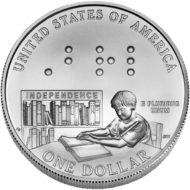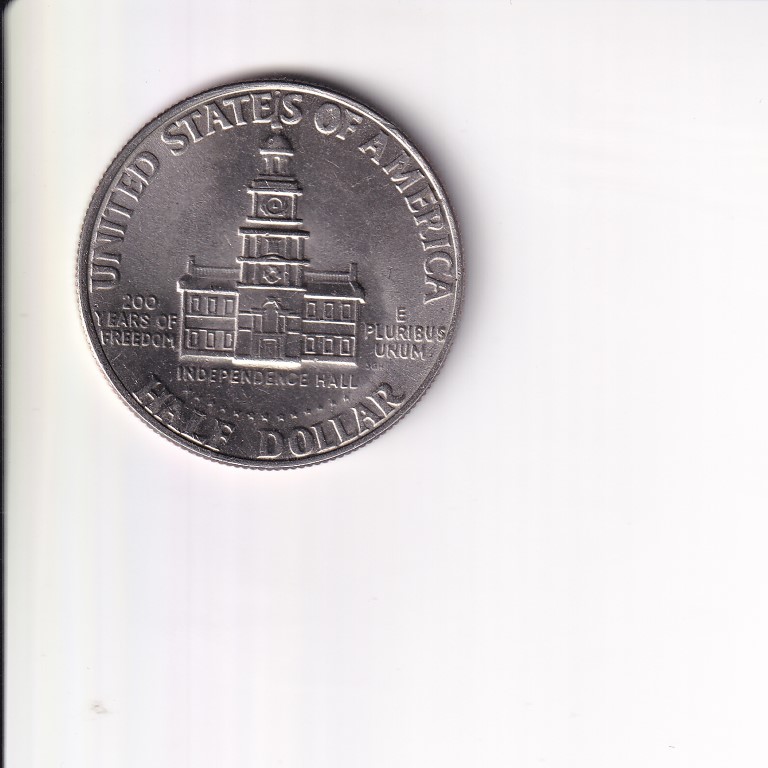Measuring coins has always been a problem, and I don’t even know why I didn’t write about it before. Earlier today I received a comment from another blind collector who was asking me about how I measure coins. As I started responding to him, I thought there is enough info for an entire post.
Though the original question was about measuring weight, it is worth examining both weight and distance.
Measuring coin weight
When it comes to coins, ideally I would like to measure weight as small as a hundredth of a gram. In most cases a tenth should be sufficient, but if for nothing else, it would be interesting to check the difference between heavily used and mint condition coins. When I started recording the parameters of my coins over 10 years ago, often this information wasn’t readily available, and I had to leave measurements blank for most of my coins. Today, weight, diameter and thickness is available for most coins on Numista, so I am going back to the coins I recorded earlier and I am updating the information.
There are of course scales which can measure with such precision, but they are not necessarily usable out of the box without vision. Most of them have a digital screen, or connect to the computer or phone, which may work out better if the software that comes with the scale works well with the screen reader. Originally I bought a pocket size precision scale which is able to measure 0.01 gram. The idea was to use this device with my phone. As the scale displays the measurement, I could point the camera at the display and use a character recognition app to read it. Unfortunately such a cheap scale had a low quality display and it didn’t work out. Honestly I am not sure if this theory would work on a higher quality display, so I didn’t want to spend a few hundreds to find out. I also have to note that more expensive scales are more feature rich, which is not necessarily a good thing when using it through a character recognition app.
The one thing I bought, though accidentally, was a talking kitchen scale. It was a little more expensive than the pocket scale, but since it was specifically manufactured for blind people, I was sure it would work. Originally I got it for the kitchen, but it quickly made it to the office when I found that the minimum weight it can measure was either one gram or one ounce. This allowed me to measure more precisely, but it still wasn’t sufficient for coins. At least I could use it for rough comparisons, and also to weigh envelopes before sending them out.
There is one method to measure more precisely without being able to see, is by using a pharmacy balance scale. Originally when I found one, it was a vintage device, which was able to weigh as little as 0.01 gram. At that point I didn’t have the money to spend on it, today it is not all that necessary as most coins have weights in the catalogs, and for the few measurements I would need it is not really worth it. So far there was only one time when I needed to measure and compare two coins with high precision.
Measuring coin diameter and thickness
The most precise tool I have is a ruler which has a tactile mark for each millimeter. For measuring the rough diameter of a coin it is sufficient, though I have to say that I usually get one or two MM deviation. Ideally, I would like to measure diameter with 0.1 MM precision. Thickness is even more difficult, because the ideal precision is 0.01 MM measured at the widest part of the coin, which can be different from measuring the thickness at the rim. Even the rim is hard enough to measure. I have bought a digital caliper, again hoping to use a character recognition app, but it didn’t work out either.
A couple of years ago I was at a technology conference when I found a mechanical braille caliper. It is a very interesting invention, because even though it is mechanical, it displays the distance in actual braille numbers. The braille numbers update at the end of the caliper as we change the distance. It is very impressive, I am not sure how durable it would be, but it definitely looked very sturdy. This caliper unfortunately measures in inches, which wouldn’t be of too much use to me if I had to convert the distance every time, especially that inches and centimeters don’t convert too precisely. The precision of this caliper is one sixteenth of an inch, which is about 1.58 MM, which could be quite useful, though not sufficient to measure coin diameter. The exhibitors told me that they are working on the metric version of the caliper, which I would certainly buy. I check if it is available every few months but I couldn’t find it yet.
I found another device, which would be even more accurate, unfortunately it is for workshops and it is based on a screw. It wouldn’t be ideal, as it could easily scratch tch or damage the coins. This device is also inch based. It is exactly one inch long, looks like a screw, and has a square shaped nut to go with it. The nut can turn around sixteen times on the screw. So, when placing a small object between the head of the screw and the nut, we only have to count how many times we can turn the nut. Each quarter turn is 1/64 of an inch, approximately 0.04 MM. This could be quite precise, theoretically we could even measure 1/128 inch with it, which is 0.02 MM, so at this point we only have to worry about the conversion to millimeters each time. Of course, measuring with this device is much slower. Unfortunately, it is just not practical for coins.


I visited this page because once, many decades ago,
i’d given a Saxophone player my only money-A five dollar Bill. It was winter, in the late 1980’s and she was playing in the middle of “nowhere” near 10 or 11 pm on Manhattan’s Upper East side-standing next to St. Monica’s Church. I told her i was giving her a $5 bill. She was pleased, and I hope i helped as I had no more. Ever since, I always wondered how she could tell the denomination-and have since that night.
I know in the days of Gold/Silver coins-the weight, musical bell like “sound” of gold or silver when dropped-and in a several cases-the “milled”edging of coins like Dimes, Quarter Dollars allowed anyone to learn to “feel” the value of a coin. US silver/copper all could be counted be dropping any coin, down to common copper pennies! Before the end of silver coinage and now ,solid copper pennies-, coin values had far more in buying power then they do now. Today’s US money -compared to the same size & denomination coin in 1963, when all were silver or copper except the US nickel (5Cent coin), was at a time when gold was valued at $35 U.S. dollars/Oz. Now(in 2020), with gold selling for nearly 2000 dollars/oz, on some days, and silver near $15.00 or more per oz, US coins of similar size to 1963 , sound flat-like slugs- because most are copper-nickel-they don’t “ring” in a bell like manner which silver or gold coins did. Copper also has a peculiar sound more recognizable than zinc/copper clad “junk pennies”.
The wort part of modern coinage is that it’s value is often less then 1/ 40th or 1/100th of old silver coins. It was the precious metal in US coins that made the milling as well as sound of the precious metal useful. Now, a US 10 Cent (a dime) coin has less value or purchasing power than a old copper Lincoln head penny minted before 1982(all copper-or bronze). In the 50’s and early 60’s, some people could count the coins by just dropping a handful on a floor.
I think using a system of varying size bills or small edge marks on the corners or along different parts of bills, could replace “smart phone” apps, which need working smart phones and electricity. Or, Mints and governments might go back to milled edge silver or even gold coins-or copper if it is expensive enough.
Giving money away is now my favorite pastime for the good it does for those without and , the small but important good it does me-(just as immediate and better for the soul) to give to one in need than to give to an enormous bureaucracy paying 5 and 6 figure salaries to the people irritating me to send checks . I do both but I don’t remember the cash I gave to Unicef in 1968.
I will never forget the smile on the face of the sax playing girl on 79th and 1st, at 11PM. This is what sustains my better angels.
Martin, thank you for your thoughtful comment. I have to tell you, one of the best tools of recognizing paper money is trust. I have done thousands of transactions, and it happened only once that I got the wrong amount back, which I think was intentional. Not a bad average. It is interesting how different coins sound different, sometimes I was able to pick out by ear when somebody paid in the store using a silver quarter.